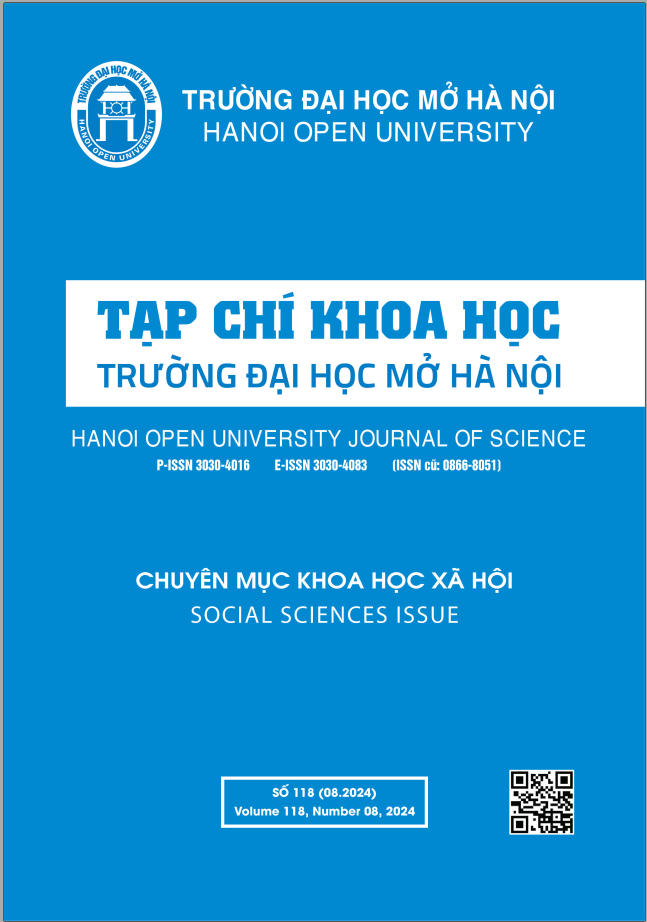SUSTAINABLE GROWTH RATE OF LISTED TELECOMMUNICATIONS TECHNOLOGY ENTERPRISES IN VIETNAM
DOI:
https://doi.org/10.59266/houjs.2024.445Keywords:
sustainable growth, sustainable growth rate, listed telecommunications technology enterprises, Higgins' sustainable growth modelAbstract
The article clarifies the basis for discussion on sustainable growth and models for measuring sustainable growth rate. The article uses Higgins' sustainable growth model to determine the steady growth rate of the Securities Telecommunications technology enterprise in Vietnam. The results were found: Listed telecommunications technology enterprises in Vietnam had an average solid growth rate of -0.04 - 0.078, the highest solid growth rate in 2017 with a value of Quantity value 0.2189, 2021 recorded a return to growth; however, the period from late 2022 to early 2023 saw businesses in the industry gradually decreasing in growth due to weak demand. by the risks of deterioration in world economic exchange and applying detection capabilities. Despite facing complex and large-scale difficulties with benefits from policies to promote digital economic development, the business community in the industry is still able to maintain a steady growth rate and develop strongly in the near future.
References
[1]. Decision No. 622/QD-TTg 2017 of the Prime Minister on National action plan to implement the 2030 agenda for sustainable development.
[2]. M. Clouse and S. McFaddin, (1994), “Resources Policy”, International journal on mineral policy and economics, volume 20, no. 2, pages 117-123.
[3]. J. Puihoi and H. Madsen, (2023), “Social and Behavioral Sciences”, journal Procedia, vol. 99, pp. 46-56.
[4]. N. Orazalina and M. Mahmood, (2018), “Energy Policy”, vol.121, pp. 70-79.
[5]. H. Y. Chena; C. Manak, C. Alice and C. F. Lee, (2013), “Extending the sustainable growth rate model”, Journal of Banking & Finance, Vol. 37, no. 4, pp. 1205-1222.
[6]. [6] The Prime Minister issued Decision (2017), no. 622/QD-TTg “National action plan to implement the 2030 Agenda for sustainable development”.
[7]. H. S. Nguyen, (2009), Doctoral thesis: “Sustainable economic development in Vietnam”.
[8]. M. S. Bui, (2015), Master’s thesis: “Evaluation and some solutions to ensure sustainable growth of Vietnam’s textile and garment industry in the period 2007-2015”.
[9]. V. D. Bui, (2014), The book “Sustainable Development Textbook”.
[10]. Lozano, R., Carpenter, A., & Huisingh,
D. (2015), A review of ̳theories of the firm and their contributions to Corporate Sustainability, Journal of Cleaner Production, 106, 430–442.
[11]. Dyllick, T., & Hockerts, K. (2002), Beyond the business case for corporate sustainability, Business Strategy and the Environment, 11(2), 130–141.
[12]. Soppe, A. (2009), Sustainable finance as a connection between corporate social responsibility and socially responsible investing, Indian School of Business WP Indian Management Research Journal, 1(3), 13–23.
[13]. Aras, G., & Crowther, D. (2009), Corporate governance and corporate social responsibility in context, Global Perspectives on Corporate Governance and CSR, 1–41.
[14]. Brockett, A., & Rezaee, Z. (2012), Corporate sustainability integrating performance and reporting, Corporate Sustainability: Integrating Performance and Reporting, 1- 316. https://doi. org/10.1002/9781119202899
[15]. R. C. Higgins, (2007), “Analysis of Financial Management” (8th ed., 2007) Irwin McGraw-Hill: New York.
[16]. J. C. Van-Horne, (2007), “Financial Management Policy”, Prentice-Hall: London.
[17]. R. Huang, and G, Liu, (2009), Study on the Enterprise Sustainable Growth Rate and leverage mechanism, International Journal of Business and Management, https://pdfs.semanticscholar.org/1420/ b728d5 7758c 3 3a c 89b6ffd1791 09b4709a41.pdf.
